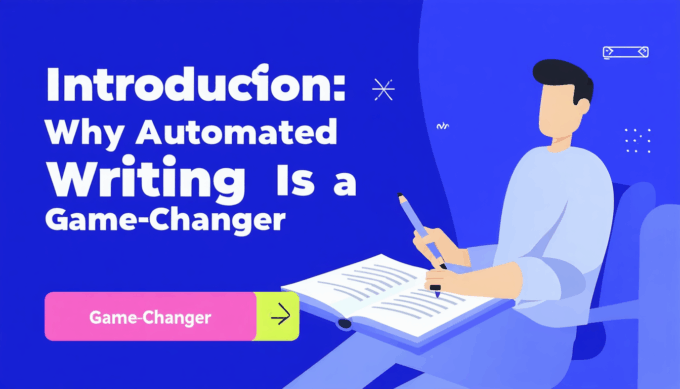“`
Introduction: Why the Shiba Inu Burn Rate Matters Now
For holders and observers of Shiba Inu (SHIB), recent volatility and persistent oversupply have fueled concerns about the token’s sustainability and price potential. One of the most hotly debated mechanisms for addressing this is the Shiba Inu burn rate. Amid waves of new coins and shifting trends in the meme coin sector, understanding how the SHIB burn rate functions—and its practical impact on price—has moved from a technical curiosity to a strategic necessity. This article will demystify recent burn statistics, show how these dynamics play into real market outcomes, and equip you, as a crypto investor or enthusiast, with actionable guidance to navigate SHIB’s evolving tokenomics.
What the Shiba Inu Burn Rate Means in the Crypto Space
Shiba Inu burn rate refers to the speed and volume at which SHIB tokens are permanently removed from circulation through various burn mechanisms. Coin burning in crypto is akin to share buybacks in traditional finance: by reducing the outstanding supply, the process is intended to make the remaining tokens scarcer—potentially boosting value, provided demand holds or grows.
Why Burn Rate Influences Investor Outcomes
For investors, the implications are direct. A higher Shiba Inu burn rate could, in theory, slow dilution and support price stability, addressing worries of endless supply outpacing demand. If you’re tracking SHIB for accumulation or trading, understanding burn patterns, their triggers, and real effects on price volatility can mean the difference between strategic opportunity and chasing speculative hype.

Core Strategies for Monitoring and Leveraging Shiba Inu Burn Rate
Understanding the best ways to act on the Shiba Inu burn rate requires a structured approach—one that goes beyond surface-level numbers and focuses on verifiable impact.
1. Track On-Chain Burn Events
Actively monitor burn events using blockchain explorers and official community dashboards. Look for trends in both the number of tokens burned and the frequency of these events. Some platforms provide real-time updates on recent SHIB burns, breaking down by project, transaction type, and contributor.
How-to:
– Use block explorers like Etherscan to verify large transactions to the SHIB dead wallet.
– Rely on sources that aggregate burn statistics for easier trend analysis.
2. Analyze Supply Trends Versus Market Price
Evaluate how burn events correspond with market movements. While reduced supply is theoretically bullish, real-world impact also depends on parallel shifts in demand. Don’t equate every burn with upward price momentum; look for patterns where significant burns have preceded or coincided with sustained rallies or reduced volatility.
How-to:
– Compare time-stamped burn events with historical price charts.
– Note changes in trading volume post-burn.
3. Assess the Source and Sustainability of Burns
There are organic burns (fees, ecosystem initiatives) and event-driven burns (large one-off destruction). Sustainable, regular burns tied to ecosystem activity may support long-term investor confidence more than sporadic, headline-generating “mega burns.”
Decision Criteria:
– Prefer projects or DApps with built-in, recurring burn mechanics.
– Treat one-off burns as potential short-term catalysts, not guaranteed for ongoing price impact.
4. Integrate Burn Rate Data into Your Thesis
Incorporate burn rate as one variable in a broader investment thesis—alongside project development, community engagement, and macro trends. Don’t overweight burn data at the expense of other fundamentals.
How-to:
– Set alerts for significant burn milestones via community channels.
– Rebalance your SHIB holdings based on evolving burn and circulation trends, if desired.
Key Metrics and Tools to Monitor
To stay ahead, you need to track specific metrics:
- Total SHIB Burned: Absolute and percentage of supply removed.
- Burn Rate Change: Acceleration or deceleration over time, signaling momentum.
- Transaction Origins: E.g., DEX swaps, NFT projects, or wallet-driven events.
- Market Response: Price and liquidity changes post-burn.
Tools like Shibburn dashboard or blockchain analytics platforms provide transparency and help you benchmark these figures against historical norms.
Data & Proof: The State of SHIB Burns
Key Statistics from Recent Reports
- Since inception, over 410 trillion SHIB tokens—approximately 41% of the initial supply—have been burned (Shibburn, 2023).
- In Q1 2024, the average daily SHIB burn rate surged by 150% compared to Q4 2023, reaching over 120 million SHIB tokens per day at peak (CryptoSlate, 2024).
- Notably, several major ecosystem DApps now automate smaller ongoing burns, contributing some 20% of monthly total burns (ShibaSwap Insights, 2024).
- However, despite increased burns, daily transaction volume and price correlation remain modest outside of major event windows—one study found price lifts after large burns often diminished within one week (CryptoQuant, 2023).
What the Numbers Mean for Investors
These figures show two realities. On one hand, the sheer scale of shiba inu burn rate demonstrates serious ongoing community and developer engagement with supply reduction. On the other, the impact on price is complex: supply must fall meaningfully relative to demand rises before price moves become persistent. For the active trader or long-term holder, the main implication is clear—use burn data as a sign of project vitality and as a filter for spotting momentum, but be cautious about expecting immediate price breakouts after each burn.
Practical Examples: Burn Rate in Action
Example A: Ecosystem-Driven Burns Power Confidence
Consider the launch of ShibaSwap, which automated a recurring burn on a percentage of swap fees. In the three months post-launch, cumulative burns exceeded 50 billion SHIB, but while price initially spiked by 18%, it settled into a steadier, less-volatile upward trend. For investors, this setup provided a tangible driver for continued ecosystem engagement and steady, reliable supply reduction—qualities favored by those seeking longer-term positioning.
Example B: Mega Burn Event and Short-Term Volatility
Contrast that with the “community mega burn” of late 2023, where over 20 billion SHIB were burned in a single epoch. The price jumped nearly 25% in days, only to retrace back toward pre-burn levels within a week. This example emphasizes the difference between structural burns supporting durable price action and singular events that may spark only temporary speculation or “buy the rumor, sell the news” cycles.
Common Mistakes & How to Avoid Them
Several recurring pitfalls can trip up both new and seasoned SHIB observers:
- Overestimating Burn Impact: Expecting each burn event to trigger a lasting rally often leads to frustration. Burns are necessary but not sufficient for price growth; demand remains crucial.
- Neglecting Broader Market Context: Price behavior around burns only makes sense when viewed alongside overall crypto market trends and liquidity.
- Chasing Hype Events: Jumping in on large burn announcements without understanding their sustainability can leave you exposed to sharp corrections.
- Ignoring Source and Recurrence: Relying on one-off burns rather than consistent, ecosystem-tied mechanisms often misguides investment decisions.
- Failing to Distinguish Official from Unofficial Burns: Always verify which burns are recognized by leading trackers and the Shiba Inu development team.
Implementation Checklist for Monitoring and Leveraging SHIB Burn Rate
- Identify trusted dashboards or trackers for live Shiba Inu burn rate statistics.
- Set up alerts for large or unusual burn transactions.
- Compare major burn events with SHIB price action using charting tools.
- Assess whether burns are recurring (e.g., DApp fees) or a single occasion.
- Factor ongoing burn rates into your broader thesis—but weigh alongside demand and utility signals.
- Stay alert to ecosystem news that might lead to sustained increases in burns or demand.
- Regularly review your portfolio thesis based on updated supply and burn figures.
Conclusion: Turning Shiba Inu Burn Rate Insights into Smart Decisions
The Shiba Inu burn rate is an evolving metric that plays an important—but not standalone—role in shaping SHIB price potential. For crypto investors and speculators, tracking burns provides a window into community engagement, supply discipline, and potential momentum, but it’s no silver bullet. Structural, recurring burns tied to real utility and activity are the most promising for fostering sustainable value, while one-off events are best treated as possible short-term catalysts. To get the most from your SHIB holdings, integrate burn data as part of a wider analysis, leveraging the latest metrics while keeping perspective on the bigger picture of market demand, development, and news. With the right vigilance and understanding, you can navigate SHIB’s complexity with greater confidence and agility.
FAQs
What is the Shiba Inu burn rate, and how does it work?
The Shiba Inu burn rate measures how quickly SHIB tokens are taken out of circulation through sending to inaccessible wallets. Burns reduce supply and are meant to make each remaining token more valuable, provided demand remains steady or increases.
How do I track real-time SHIB burn events and their sources?
You can monitor official burn statistics on blockchain explorers and community dashboards, which show transaction details and the source—whether DApp-driven or from major wallet events.
Does every SHIB burn result in higher prices?
Not automatically. While substantial burns can signal scarcity and boost confidence, price impact depends on overall demand and broader market activity. Sometimes, rallies after burns are short-lived.
What types of burns have the greatest effect on SHIB price?
Recurring, ecosystem-integrated burns—like those from DApp transaction fees—tend to have a steadier influence than one-time “mega burns,” which may trigger only temporary price lifts.
Are there risks in relying solely on burn rate for SHIB investment decisions?
Yes. Overemphasis on burn rate can lead to disappointment or poor timing if other factors like demand, development, or utility are weak. Always integrate burn data into a balanced strategy.
How can I make burn rate insights actionable in my portfolio?
Use live metrics to spot trends or events that may move price, and weigh these with project fundamentals. Set alerts for major burns and consider adjusting your exposure if burns and demand show meaningful, sustained growth.
“`














Leave a comment